The McLaren F1 Is Still the Definition of the Perfect Supercar
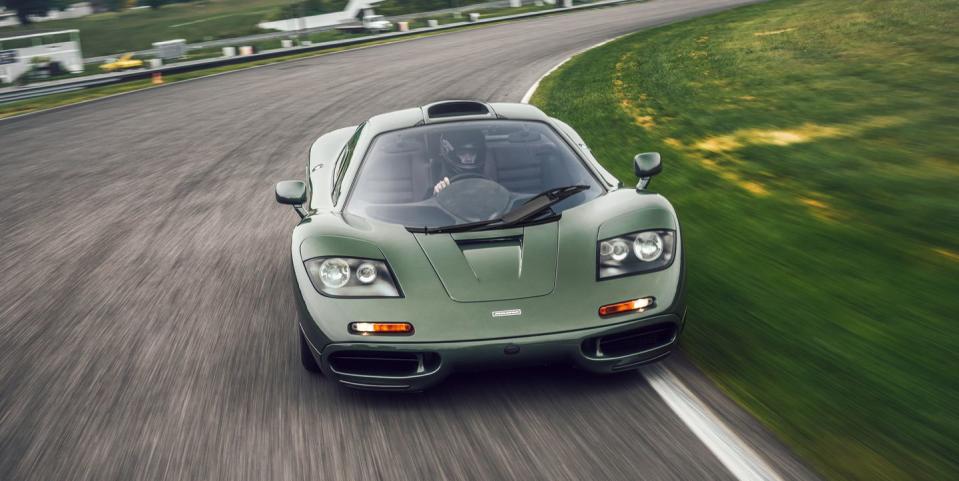
Your blood curdles at the sight of the thing. Nobody mentions that. Long before you’ve unlatched the McLaren F1’s dihedral door, before you’ve humped into the central driver’s seat, before that anxious V-12 fires to life and the intake scoop is hoovering up acres of atmosphere over your head. Before all that, there is simply this thought: Do not f*** up.
Because aside from everything else this McLaren F1 is, it is worth $20,000,000. No way past that wall of zeroes. Mountains of insurance waivers couldn’t silence the implications of generational ruin. If you crash this car, your grandchildren’s children will die in dirt-floor poverty.
This is an excerpt from our recent article, "The Search for the Greatest Sports Car of All Time," where we rounded up eight of the most important enthusiast cars ever made, track-tested them at Lime Rock Park, and declared one ultimate winner. Enjoy this chapter on the McLaren F1, but be sure to read the entire eight-part story.
Of course, the F1 has always been untouchable, a holy relic on its own plane of glory. It sprang from the sweat of designer Gordon Murray’s brow in 1992, accompanied by facts that sounded like hyperbole: 240.1-mph top speed, 627 horses, exotic carbon-fiber construction, an $815,000 price tag. Even as a student of early-Nineties optimism, I understood that no matter how graciously life unfurled, The One was out of reach.
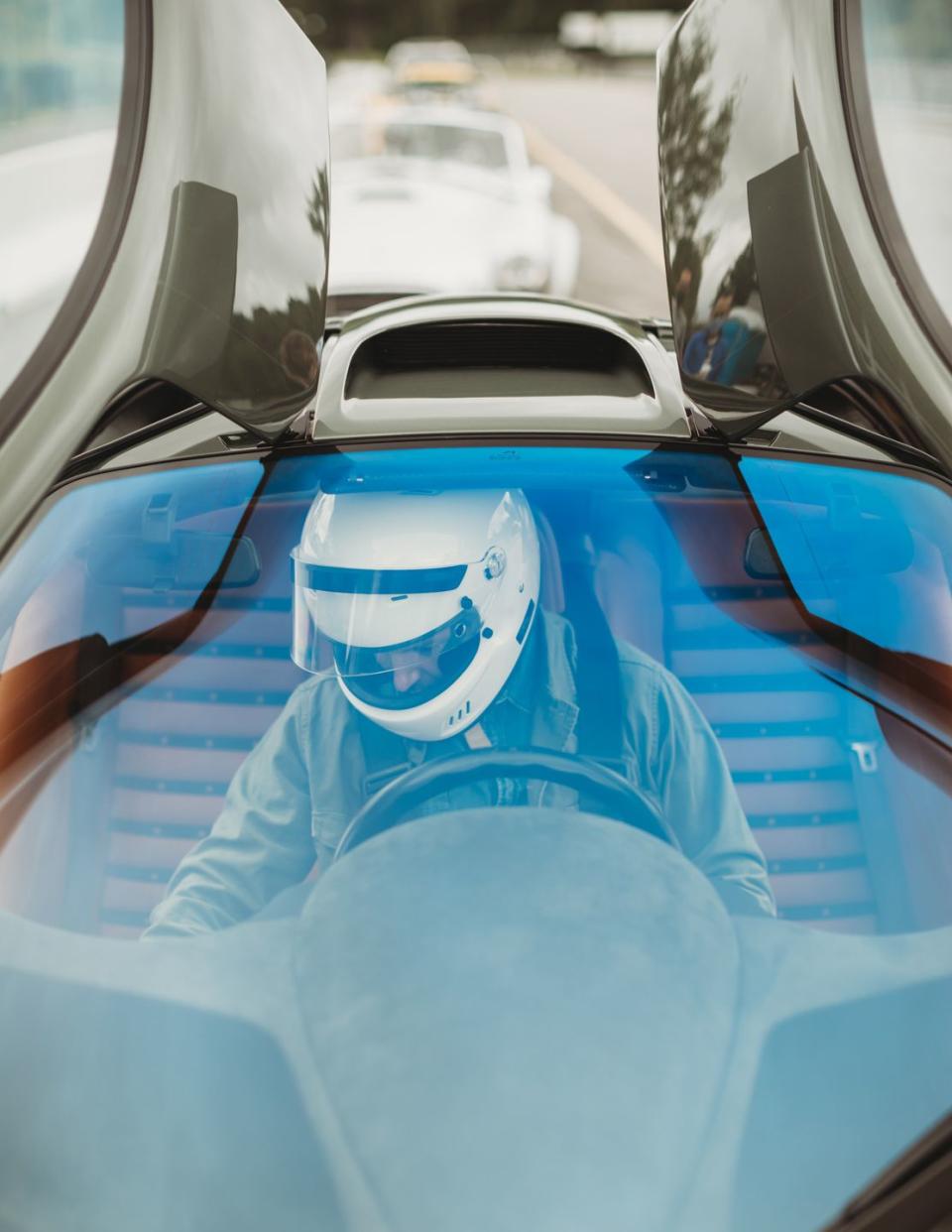
The McLaren F1 legend only grew, burnished by victory at Le Mans in 1995, with beaming reviews in buff books and the sense that a zenith had been reached. So this supercar became more precious, more valuable, until it was untouchable. The last time I lingered close to one, a thin-lipped Parisian nearly booted me out of the Musée d’Orsay. That McLaren F1 was cordoned by velvet rope, placed on a literal pedestal. It’s how most of us meet this hero.
But not today. Forget velvet ropes. The key was in my hand, ready to fire a V-12 bullet at 30 years of expectation.
So the $20-million question: What is it like to drive the McLaren F1? Breathtaking. Awesome, in the purest sense. You press a covered button and the starter whirs. The 6.1-liter V-12 barks to life, singing a thin, breathy exhaust note. The engine feels restless, never settled at idle, but nipping, gnashing, yanking at the end of its leash.
You tip into the throttle pedal and wind up the BMW engine. It reacts instantly, climbing into a metallic basso at the tach’s midrange. Forget every low-inertia drivetrain you’ve ever flogged. This engine’s circulating mass is made of air itself, so fast does the tach needle sprint toward redline and back.
I crawled the car away from the pits toward Big Bend, Lime Rock’s first turn, working the shifter slowly from second to third and fourth, gawking at the alien cockpit. The F1’s center seat warps your perspective on the outside world. Your body seems to stretch along with the chassis, heightening the F1 experience. You’ve never sat nearly prone in a cabin before, or seen both fenders equidistant from your helmet visor, framing the road like a rifle sight.
The steering feels magnificent, even at low speeds, taut as a bowstring and surprisingly light for an unassisted rack. The F1’s chassis seems to follow your eyes as the front tires dart toward each corner apex, led along by tiny jabs of steering input. How in the hell did they keep this thing upright at 240? The shifter moves in long throws across a direct, precise path. The shift between second and third gear requires some practice to get right, just a breath between gates to make sure third slots home.
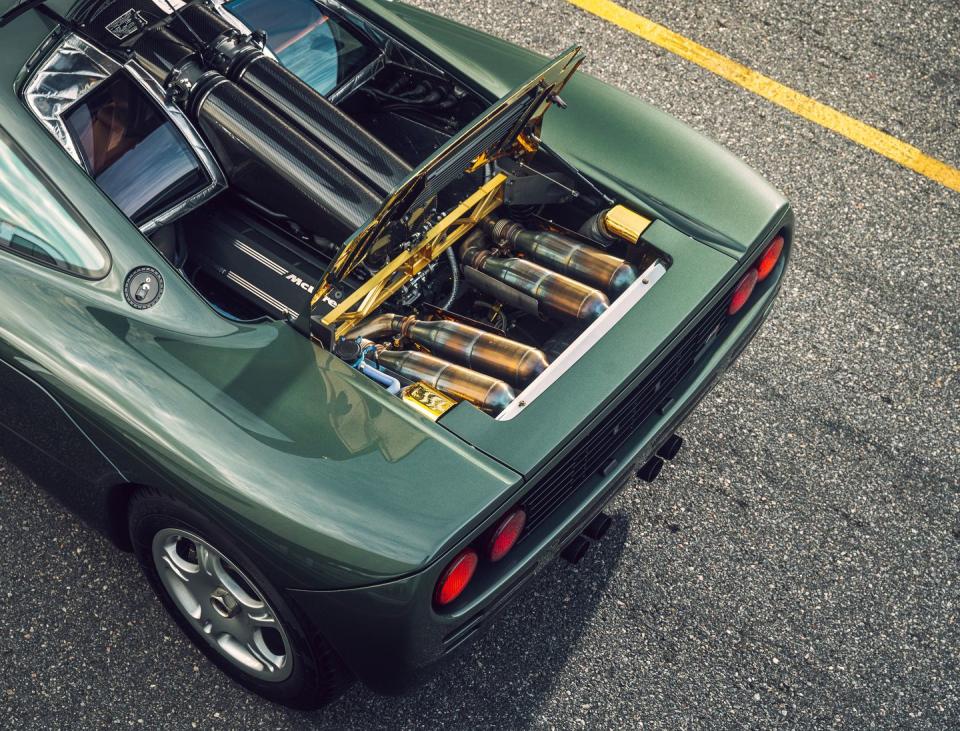
I crested Lime Rock’s back half, rolled through the track’s final corner, then pointed the F1 in line with the Sam Posey Straight and flat-footed the gas pedal. Ladies and gentlemen, we have lifted the hell off. My memories blur from that point. I remember intake whoosh overpowering the V-12’s shout, wind noise wrestling over the F1’s nose, and that funny light feeling your groin gets between the high dive and the deep end. All that, but mostly just flashes of uncut speed.
Full throttle in a McLaren F1 blurs your periphery. The sensation of speed is visceral, immediate, leaving no bandwidth for any thought but Hang On. The McLaren demands absolute and total focus, because when you hit the gas pedal, the horizon is punching at your chest.
That’s not hyperbole. Even in 2020 the F1 feels legitimately quick for a supercar. When you think about the technology Gordon Murray and his team leveraged to piece the car together in the early Nineties, with primitive tires, an absence of turbochargers, zero thrust from electric motors, and rudimentary carbon construction, the F1’s longevity becomes staggering.
1995 MCLAREN F1
ENGINE:
6.1-liter V-12
OUTPUT:
627 hp/479 lb-ft
TRANSMISSION:
six-speed manual
WEIGHT:
2579 lb
PRICE WHEN NEW:
$815,000
For three laps I leaned into the car as much as I dared. The unassisted brakes require real heft, reining in the F1’s speed slower than you expect. When straightaways revealed themselves, I aimed the McLaren and welded the throttle open. The shift from third to fourth is etched on my brain stem. Revs fall like lead between gears. You almost can’t work the shift lever fast enough to keep the engine boiling. After a few tries, it clicks. The F1’s drivetrain demands the quickest shift you can make; it revels in brutality. In that moment, you understand how this car rolled off city streets and onto the Mulsanne Straight.
Back in the pits, a moment to exhale. And time to reflect. Editors went out, lapped, returned with bright, shocked faces.
“I couldn’t crawl out of the myth of it,” contributor John Krewson said. “It’s hard to overstress how every input matters, how everything you’re doing matters, and how that focuses your attention.”
“And that’s worthwhile, but also… there’s not a lot of fun there. There’s a lot of awe,” senior editor Zach Bowman added.
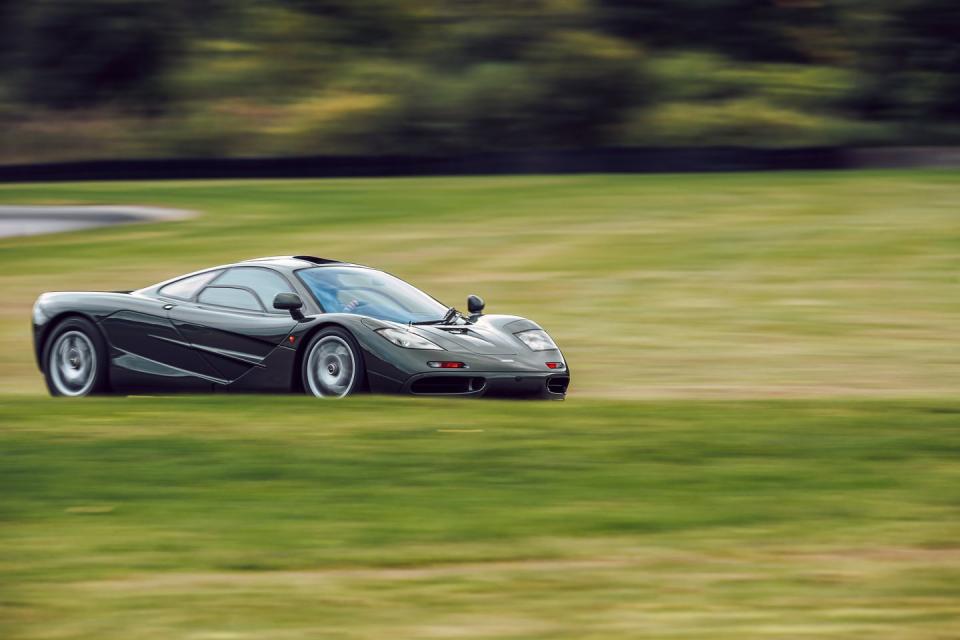
Awe is the right word. Beyond driving the McLaren F1, there’s so much awe to uncover. The Revs Institute graciously lent the F1 to us for two days, just enough time to pore over the car’s every intricacy. The car was tended by Kevin Hines, senior technician at McLaren Philadelphia and North America’s F1 whisperer, who services and cares for these special vehicles.
Hines showed us the F1 through his unique lens (sometimes he’ll spend a year and a half rebuilding a single F1). You don’t understand how utterly special every inch of this car is until Hines shows you. My favorite: the microscopic bolts on the shift-console trim. Hines was forced to special-order a Snap-On Allen key because he couldn’t find one small enough to free those bolts. McLaren had found the lightest possible way to attach a tiny trim piece. Now extrapolate that philosophy across every inch of the car.
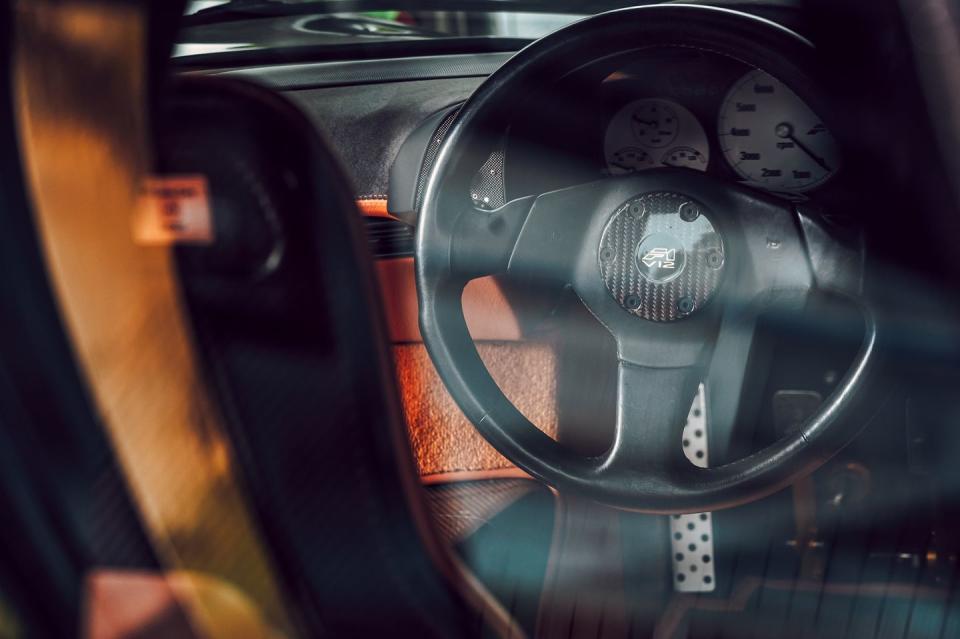
The F1 needs more stewards like Kevin Hines and the Revs Institute, those willing to allow this living, breathing masterpiece to stretch its restless legs. With every detail observed, the McLaren F1 reveals itself as more than a supercar; it’s a vessel for human ambition of the highest order. The term “moonshot” gets tossed around a lot, but spend enough time with this car and the idea rings true. This object was obsessed over at every facet, conceived as the Platonic ideal of supercar, without interference from baser thoughts.
“It made me realize something: Our understanding of wealth has changed,” deputy editor Bob Sorokanich noted. “In 1994, buying the best new car in the world meant buying the fastest, most powerful, most pure, most communicative car. Today, you’d buy something powerful, gaudy, and utterly livable. Something that hides all the dirty work.”
That got me thinking about the F1’s descendants, pebble-smooth slabs of menace that look the part but quietly cast a wide safety net. I’ve managed fourth-gear oversteer in a twin-turbo Ferrari; I’ve buried a McLaren Senna’s throttle until my nerve crumbled; I’ve watched a V-10 Lamborghini’s speedo crest 180 as the runway shrank before me. None of that prepared me for the ruthless F1.
“The F1 is everything we say we want from a supercar, which is fewer nannies. It’s a knife,” Bowman said. “You either know how to use this tool or you’ll hurt yourself.”

“That was fantastic and awe-inspiring and singular and transcendent, and I never want to go through that again,” Krewson said in summation. And such are the stakes with a $20,000,000, 240-mph legend.
When I pulled myself from the F1’s cockpit, a disorienting cocktail of overstimulation and relief gripped me. After that encounter, I’ve never been more certain: The McLaren F1
is the greatest supercar ever built. More than that, I believe it’s the greatest that will ever be built. It may well be the greatest that can ever be built.
Finally closing the F1’s dihedral door reminded me of every big mountain peak I’ve summited. There’s a trembling mix of exhilaration and fear when only your own hands and skills stand between you and ruin. When you come away, you’re humbled that the mountain allowed you to go back home unharmed. But more than anything, you’re grateful for the brief, dazzling view from the top.
To find out which car won our "Search for the Greatest Sports Car of All Time," click here.
You Might Also Like

 Yahoo Autos
Yahoo Autos 